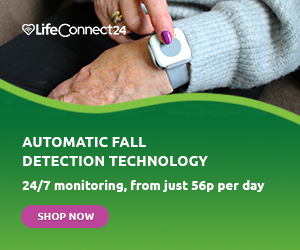If you’re disabled or have a long-term medication condition which affects your mobility, you can apply to become a part of the Blue Badge Scheme. This scheme helps drivers with a disability to park closer to their chosen destination and also exempts you from certain parking restrictions.
In today’s post we will discuss everything that you need to know about eligibility, applying and using the Blue Badge Scheme. For information about other benefits, please see our in-depth article.
Eligibility
You can apply for the Blue Badge Scheme if you’re disabled or suffer from a long-term medical condition which has an effect on your mobility. You can also apply for a badge if you care for a child with a health condition.
Being on certain benefits will mean that you’re automatically eligible for a badge and will make the application much more straightforward. You’re automatically eligible for a Blue Badge if you:
- Receive the higher rate of the mobility component of Disability Living Allowance or if you score a certain level on the Moving Around activity within the Personal Independence Payment.
- Receive a War Pensioner’s Mobility Supplement.
- Registered as a blind person.
- Receive a lump sum payment as part of the Armed Forces Compensation scheme and have been certified as having a permanent and substantial disability.
- Have a permanent and substantial disability which means you are unable to walk or have very considerable difficulty in walking.
If none of these apply to you, you still might be able to receive a Blue Badge, but you’ll need to complete an extra part of the application to show why you need one. According to Citizen’s Advice, you should do this if:
- You can’t use your arms.
- You have problems walking that or permanent or that your doctor says are likely to last for at least a year.
- You’re applying on behalf of a child aged over 2 who has problems walking, or a child under 3 who needs to be close to a vehicle because of a health condition
Applying for the Blue Badge Scheme
To apply for the Blue Badge Scheme you’ll need to visit the appropriate section of the GOV.UK website, or contact your local council if you’d prefer to fill the application out on paper. You’ll need to make sure that you have the following documentation before you begin your application:
- Your National Insurance number.
- Your driving licence.
- Your original decision letter from the Department of Work and Pensions – if you’re automatically eligible for a badge.
- Proof of identification, for example a birth or marriage certificate, passport, ID card or driving licence.
- Proof of address, such as a Council Tax bill or a utility bill dated within the last three months.
- A photograph of the person the badge is for.
After applying, you should usually hear back within six to eight weeks – depending on your council. You can always get in touch with them for an update if you’re concerned. It may be that you’re asked to complete a mobility assessment, where a doctor will look at your ability to carry out a range of mobility activities and inform your council whether or not your condition affects your ability to move.
Using your Blue Badge
Being a part of the Blue Badge Scheme allows you to use disabled parking space, in-turn allowing you to park closer to your chosen destination. As well as car parks, you can also use your Blue Badge to park:
- For free at on-street parking meters and in Pay and Display bays.
- On single or double yellow lines for up to three hours – except where there is a ban on loading or unloading.
Your Blue Badge is linked to you rather than your vehicle, which means that you can take your badge with you no matter who you’re travelling with. The Blue Badge is recognised in all European countries and allows you to make use of the same parking concessions as the country’s own citizens with disability.
A loved one can use your badge if you’re in the car with them, or if they are dropping you off / picking you up and need to park close to where you need to be.
When using your Blue Badge, you need to make sure that it is the right way up, clearly visible through your windscreen and that it hasn’t expired. If you park somewhere with a time limit, always set the parking time clock on your blue badge to show the 15-minute period that you arrived.
If you lose your badge or it expires then you need to contact your local authority and ask for a replacement. After three years you’ll also need to renew your Blue Badge.
Breaking the Rules
If you misuse your right to be a member of the Blue Badge Scheme on purpose you could end up with a fine of up to £1000. You need to remember that you cannot give it to other drivers unless they are driving with you in the car. You can also get into trouble if:
- You keep using your badge when you no longer need it.
- You use your badge to park if you’re not planning on leaving the car.
You should also let your loved ones know about the rules of the Blue Badge Scheme in order to avoid losing your badge.
Personal Alarm Information
For more information about our life-saving personal alarm service, please get in touch with our friendly team on 0800 999 0400. Alternatively, complete our contact us form and we will get back to you as soon as possible.
Use the discount code BLOG2018 when you order one of our personal alarm on a Monthly or Annual Plan to receive £10 off.



Leave A Comment